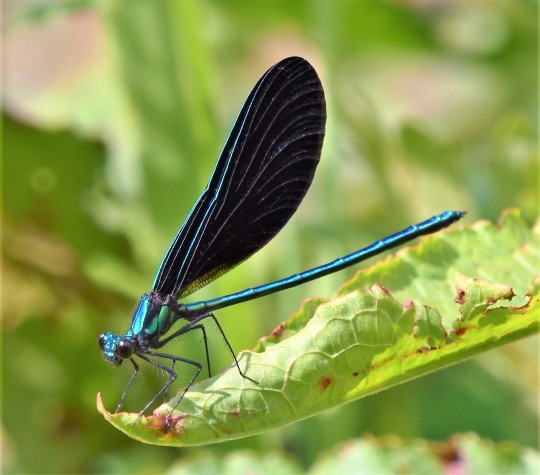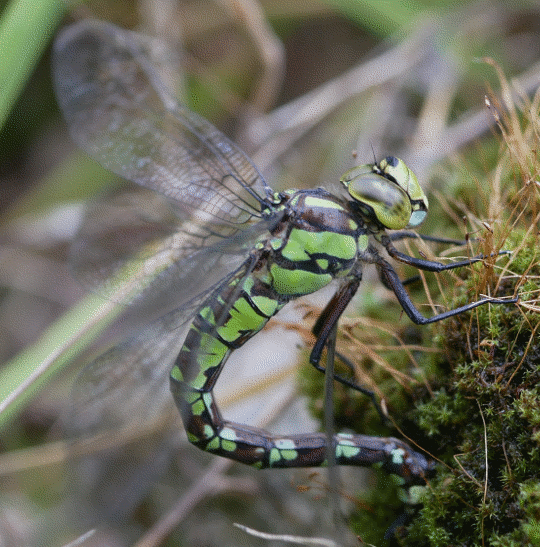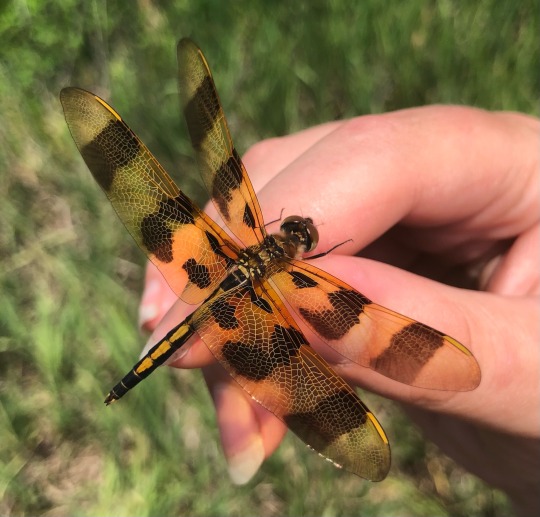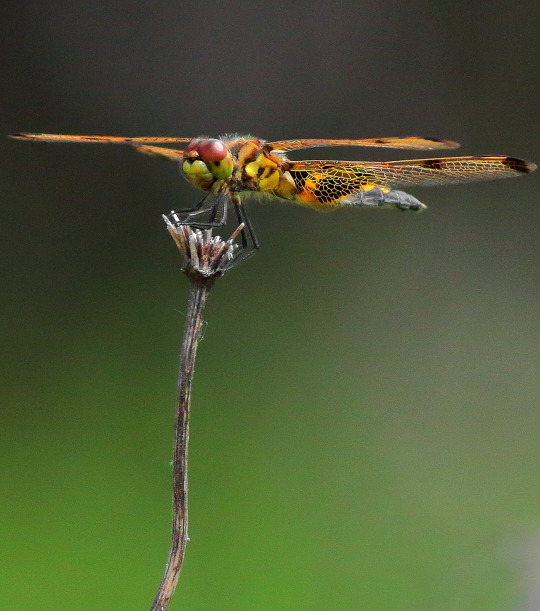Photo
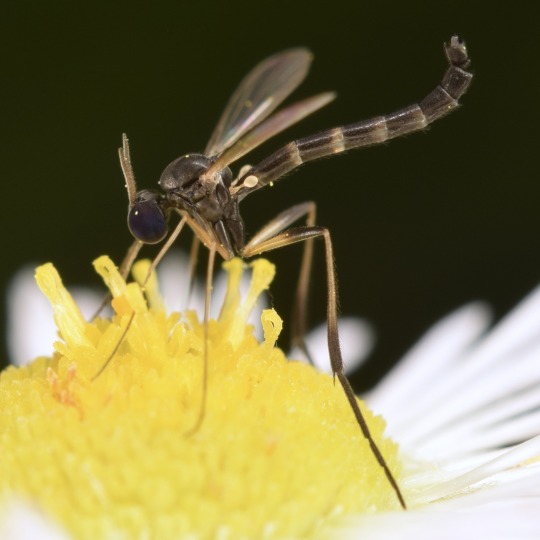
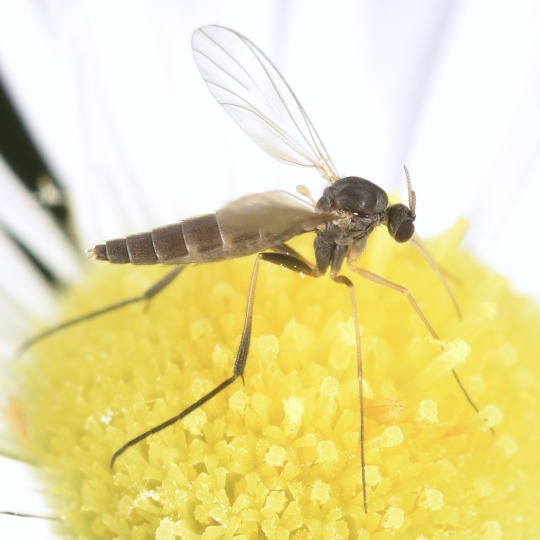
Lygistorrhina sanctaecatharinae
male and female
78 notes
·
View notes
Photo

Ruddy Darter (Sympetrum sanguineum) Female by Rezamink
A Female Ruddy Darter taken near Bremhill, Calne, Wiltshire, UK on the 28th July 2021. https://flic.kr/p/2me47fx
4 notes
·
View notes
Photo
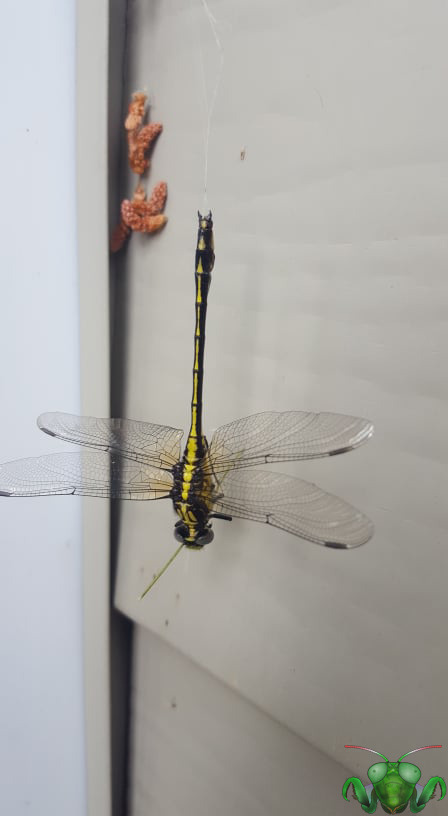
Black-Shouldered Spinyleg - Dromogomphus spinosus
To conclude the showcase (for now) of the majestic sky-hunters known as Odonata we have one final, special specimen, fresh from a cottage visit in Muskoka. I couldn’t go unfortunately, but one of dearest friends is on the lookout for some of those cottage insects that patrol the water. Last year he was gracious enough to contribute some amazing Moth findings! I deeply appreciate those, and this new addition to the many Dragonflies of Toronto. As we enter July and the height of summer, these beautiful insects emerge to patrol the skies, jetting to and capturing flying insects on their hunt. Hard to believe that something so talented at flight could spend most of its time in the water (as a naiad) swimming around. Cottage country certainly is a great place to find Dragonflies in that case. The predatory young can swim to their heart’s content in the lakes and feast on creatures such as Mosquito larvae. There’s plenty of open space to fly around in adulthood, and the process repeats itself. This individual doesn’t appear to have it so lucky as it appears to have expired, and possibly have been tangled up in silk. I’m not sure, all I have is the picture to go on, and speaking of which, I should probably dive into what makes this Dragonfly so different.
This type of Dragonfly isn’t a Skimmer or even a Darner despite its large size and broad wings. It may not look it, but this bright-yellow hunter is something called a Clubtail Dragonfly - of the family Gomphidae! While this specie doesn’t show off the pronounced feature, other species have an abdomen that widens out towards the end resembling a tail club, just like the armored anklyosaurid dinosaurs. Some have no club, others a small club and some are fairly broad. It likely isn’t used for a defensive weapon, but it still gives these Odonates something distinguishable to an observer. If you can’t see a clubbed tail, you can tell these insects apart from other Dragonflies by looking at their eyes. Notice how they are separated from each other, compared to the others which meet in the middle? I wonder is this alteration has changed their range of vision and thus their habits like hunting and perching? To identify a Clubtail, you’ll need to look closely at the body pattern and find the right match. This goes for the thorax pattern all around and the abdominal patterns too. Since a lot of them that call Ontario home are yellow, finding the match for this one was very tricky. So very tricky. Fortunately, the tail pattern sealed the deal in conjunction with the “I” shaped pattern on the thorax. Trying get pictures all around their body if you can* (you may need a net to catch them, be gentle), especially at the end of the tail. The end of the tail will help you determine the gender of your Dragonfly. Claspers like that seem to indicate that is individual was male, but you can never be too sure from just one picture.
*Note: Angle of picture hides the spiny legs of this Dragonfly. Refer to others for similarly defined legs. Apparently this Spinyleg has long and short spikes on their legs for restraining prey. Fascinating!
Picture was taken in on July 1, 2021 in Muskoka with a Samsung Galaxy 6 Edge
1 note
·
View note
Photo

Ruddy Darter (Sympetrum sanguineum) Female by Rezamink
A Female Ruddy Darter taken near Bremhill, Calne, Wiltshire, UK on the 28th July 2021. https://flic.kr/p/2me47fx
4 notes
·
View notes
Photo

Eastern Amberwing (Perithemis tenera)
July 25, 2021
Southeastern Pennsylvania
100 notes
·
View notes
Photo
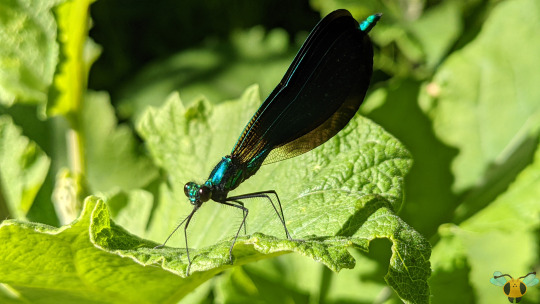



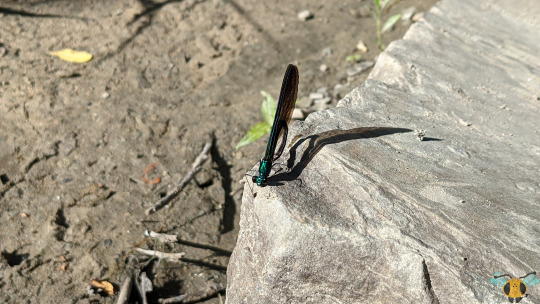


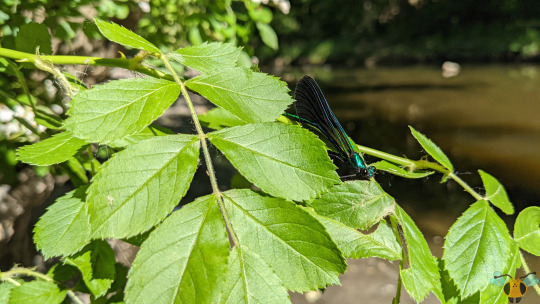
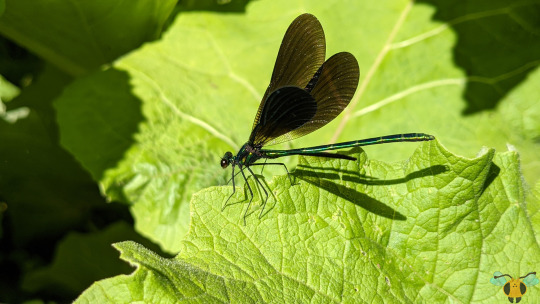

Ebony Jewelwing - Calopteryx maculata
Goodness me, I’m thrilled to showcase this bejeweled, metallic green, magnificent insect after its been absent from this blog for such a long time. Honestly, I was beginning to wonder if I would ever find one again around the neighborhood. Fortunately, they were in season and there were a good handful to be found by the water, basking in the sunlight (in a sort of obelisk position). Depending on the angle and lighting (along with individual variation), their color might be more blue than green, but they are still elegant to observe. Compared to all other Damselfly species on this blog (at time of writing), this specie belongs to the Broad-Wing Damselfly family (Calopterygidae), distinguished by the widening curve of their wings compared to that of Coenagrionidae, or Narrow-Winged Damselflies. Me personally, the wider winged Damsels might just be the way to go aesthetically: with little particles trapped on their wings, the widened shape, the network of veins and the dark color, they resemble a beautiful starry night. A flitting one at that as these insects flit and flutter around plant life to navigate rather than bursting suddenly with great speed.
On Pictures 2 and 9 the flitting behavior was captured while at rest. When you observe these insect yourself, you’ll see a sudden opening and closing of the four wings. It’s quite elegant, and likely a way of stretching the flight muscles or keeping the warmed up for a sudden takeoff. Though their flight isn’t as powerful as their Odonate relatives, the Dragonflies, the flitting makes them bouncy and agile, allowing them to catch insects quite suddenly, snaring them with their dainty, but hairy legs. Notably, their front most legs are lined with hairs to restrain small insects. Furthermore, despite their bouncy flight, the control of their ability to change direction and suddenly turn is remarkable. You’ll need to move slowly and softly to try catching one of these beauties (I did catch a few in hand, but they promptly flew away after). Finally, the wings hide another secret which will be expanded upon in Friday’s post. Looking at the wings will help determine whether your found Damsel is male or female. These particular individuals are male as female wings have a beauty spot. Look forward to the next post; you’re in for a trove of beautiful ornate Odonates.
Pictures were taken on June 16, 2021 with a Google Pixel 4.
98 notes
·
View notes
Photo

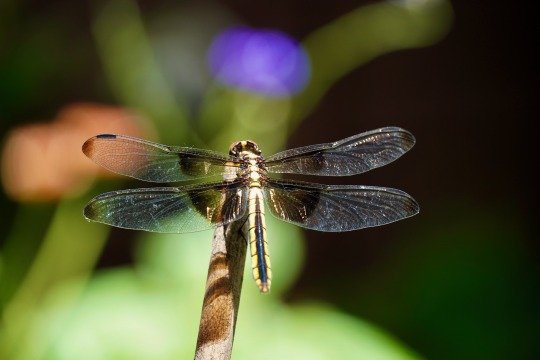
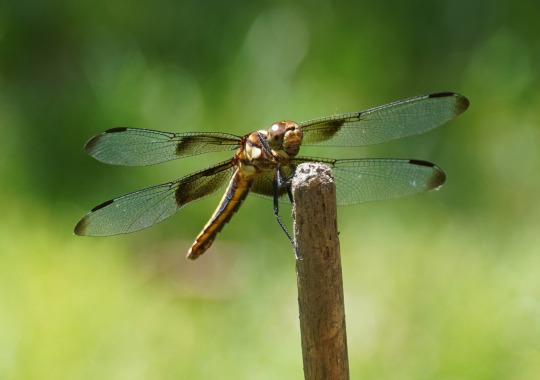
Widow Skimmer dragonfly. It has been enjoying this one stick in my garden for the past 3 mornings. I suspect it is a juvenile male, since it started out with more translucent wings like a female, but each day the white spots on its wings appear more and more opaque. It takes off but always comes back to the same spot. June 15, 2021, Santa Rosa, CA.
[Image description: A dragonfly is perched on a stick. The photos offer an up-close perspective of its side profile, back side, and front side/face. It has translucent double-wings with inky black blotches and gold iridescent shimmer. The abdomen of the dragonfly is yellow with a black line down the back.]
13 notes
·
View notes
Text
Y'ALL I TOOK THE PRETTIEST DRAGONFLY PICTURE EVER!!!
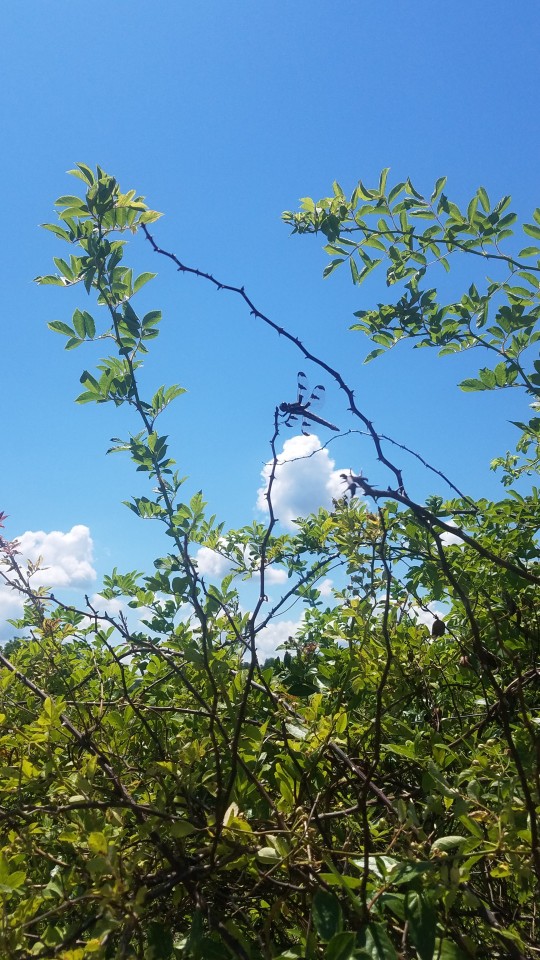
She is most likely a Common Whitetail Skimmer, Plathemis lydia.
Taken in Kentucky, 6•16•21
5 notes
·
View notes
Photo


Great Blue Skimmers (Libellula vibrans)
June 6, 2021
Southeastern Pennsylvania
194 notes
·
View notes
Photo


Pond spreadwing damselflies
Swamp Spreadwing, male (Lestes vigilax) (Vertical)
Elegant Spreadwing, female (Lestes inaequalis)
May 14, 2021
Statesville, North Carolina
169 notes
·
View notes
Photo
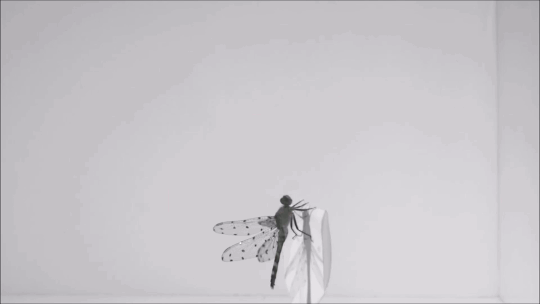

Spend a summer afternoon floating in a kayak and chances are you’ll see some impressive aerial acrobatics from dragonflies. One of the dragonfly’s superpowers is its ability to fly backwards, which helps it evade predators and take-off from almost any orientation. To do this, the dragonfly rotates its body so that it is nearly vertical, thereby changing the direction it generates lift. In engineering terms, this is “force-vectoring,” similar to the techniques used by helicopters and vertical-take-off jets.
Scientists found that backwards-flying dragonflies could generate forces two to three times their body weight, in part due to the strong leading-edge vortices (bottom image) formed on the forewings. They also found that the hind wings are timed so that their lift is enhanced by catching the trailing vortex of the first pair of wings. Engineers hope to use what they’re learning from insect flight to build more capable flying robots. (Image and research credit: A. Bode-Oke et al., source; via Science)
834 notes
·
View notes
Video
Dragonfly in the rain (via)
1K notes
·
View notes
Photo
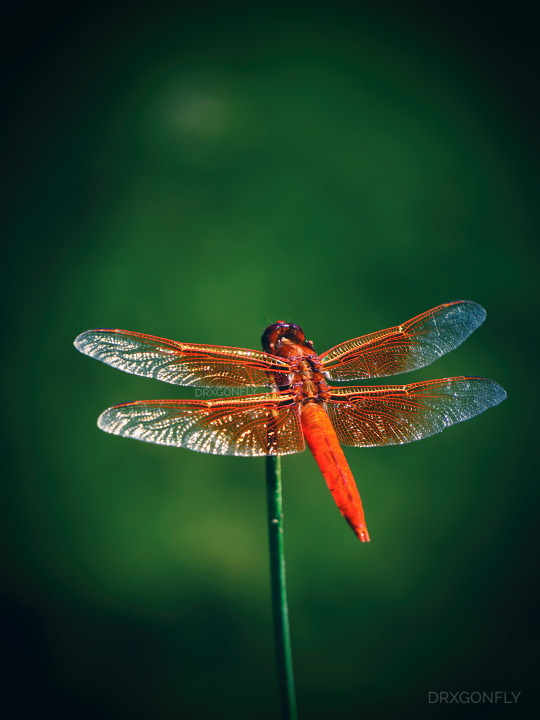
Self Portrait (by drxgonfly)
1K notes
·
View notes
